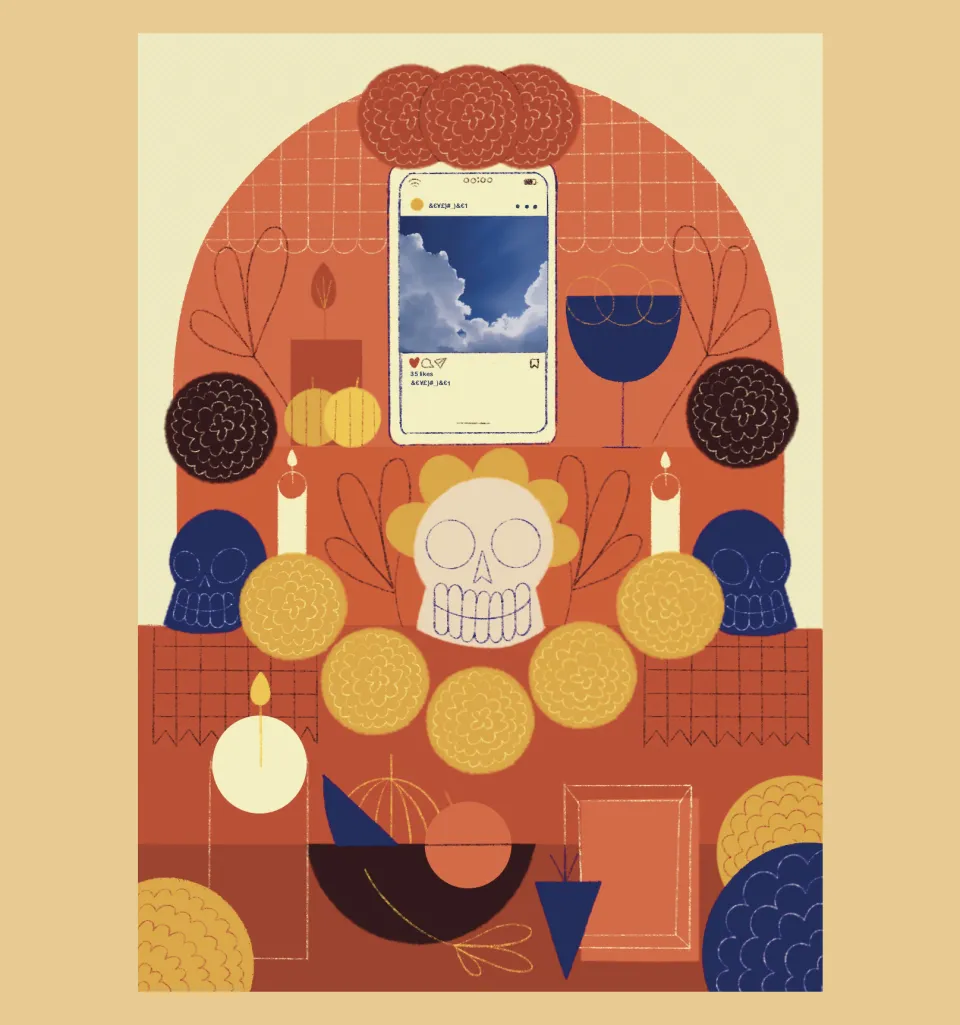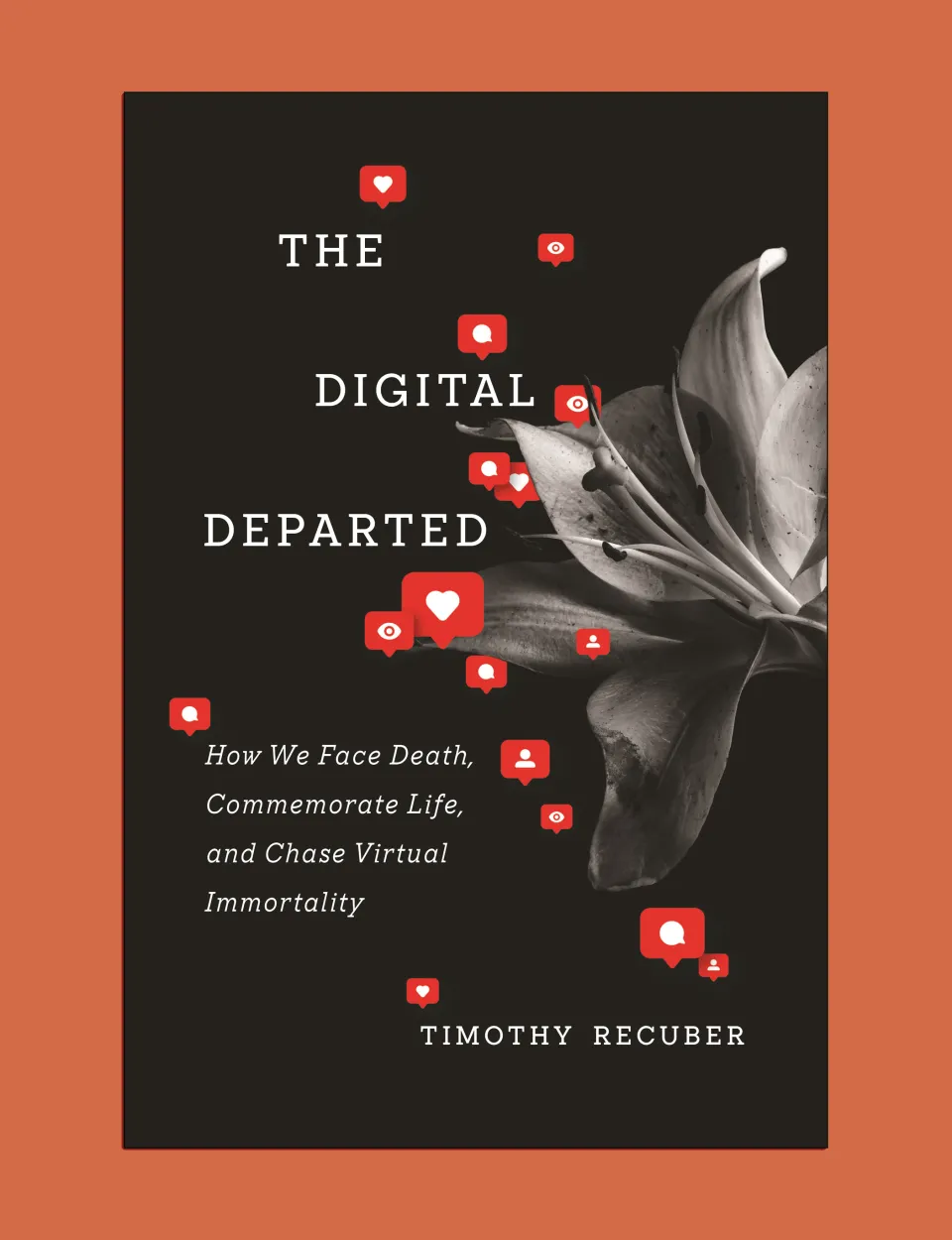Clicking Beyond Mortality
Research & Inquiry
A new book explores the intersection of death and the digital realm
Published December 20, 2023
What does it mean to live and die in today’s digital age? And what happens to our digital selves—our online identities in the internet world—when we die? Timothy Recuber, assistant professor of sociology, asks those questions and many more in his new book, The Digital Departed: How We Face Death, Commemorate Life, and Chase Virtual Immortality (New York University Press). Recuber discusses how digital technologies have become a means to cope with the anxiety of death.
Your book offers a comprehensive look at death and dying online. What was your source material?
“My main goal was to use the words of the dead and dying themselves as source material. That meant putting together collections of texts like blogs of the terminally ill. But I also ended up looking at news media coverage related to digital death and Twitter hashtags, where users grappled with the deaths of Black people at the hands of police. Finally, when trying to understand some of the more cutting-edge or future-oriented death technology out there, I ended up interviewing entrepreneurs who work on things like postmortem messaging and mind uploading.”
How has communication about death evolved over time?
“The Victorian era was a period of experimentation with death-related communication technologies. For instance, people would take photographs of their deceased loved ones—sometimes even posing alongside them—before they were buried. But after World War I there was a gradual movement away from Victorian mores around death and a kind of shunning of dying, death, and mourning. This was a period where death became fully medicalized, people were more likely to die in hospitals than at home, and everyday contact with the dying and the dead decreased. That period lasted roughly until the late 1960s, when a backlash emerged to this kind of medicalized, death-denying culture. The modern hospice movement developed then, and more recently we’ve seen things like ‘death cáfes,’ where people gather together to openly discuss mourning and mortality. I think those changes have set the stage for many of us to be more open to the idea of digital communication technologies playing a role in the grieving process or simulating a kind of conversation with a lost loved one. Plus, the ubiquity of the internet and social media today means that many people who have died have profiles, webpages, and all sorts of digital forms of self-expression that need to be considered; you almost can’t avoid it.”

Illustration by Helena Pallarés
How do power and privilege play a role in the mourning process?
“People with power and privilege have generally been seen as more ‘mournable’ than others. If we think of things like the Egyptian pyramids, great leaders have often been able to commission monuments to themselves, to try to cement a kind of immortality for themselves and mark their eventual passing as a public event of great importance. Everyday people—unless they’ve achieved something very rare and heroic—have been mourned in much more modest ways and forgotten much more quickly. There’s something populist and democratizing about the various examples in the book of people using digital tools and online spaces to commemorate themselves, to make the case that they too are worth remembering—and not just by those close to them but by everyone.”
You explore the posthumous internet world from the perspective of both the living and the dead. Does social media provide a home for
digital talk about death and for the digital legacy
we leave behind?
“Definitely. There’s about a decade’s worth of research on the ways that people use the social networking profiles of their dead friends and loved ones to keep a sort of one-sided conversation going. They’ll pop in and say hello when they are missing them or on birthdays or anniversaries and such. By now the platforms themselves have instituted policies around these practices, which were at first created in an ad hoc manner by users themselves. What the book really tracks are the more recent ways that people have sought to engage with their own death and dying online, rather than the deaths of others. Cementing a legacy for yourself with a blog or other online note, creating messages to be emailed to loved ones after you die, or even taking the first steps toward preserving your brain in a computer for eventual reanimation—these all speak to people’s desires to achieve new kinds of virtual immortality.”
Is this treatment of death and dying a way to ensure immortality as Emily Dickinson described it? (“Because I could not stop for Death – / He kindly stopped for me – / The Carriage held but just Ourselves – / And Immortality.”)
“I think it certainly helps people face death, and not fear it as much, if they believe that new digital tools and online spaces will allow some part of them to live on when their corporeal selves are gone. But it’s also important to recognize that such immortality is never actually ensured: links rot, emails go unread, websites aren’t hosted forever, and it’s all increasingly subject to the whims of the big companies who own and control the internet. The digital environment can enchant us with the notion that some part of our souls might be preserved, but none of it is really eternal. We have to make sure that the grassroots experimentation with discourse around death and dying online doesn’t get swallowed up by big tech or made expensive and inaccessible.”
Headline photo by Jim Gipe

